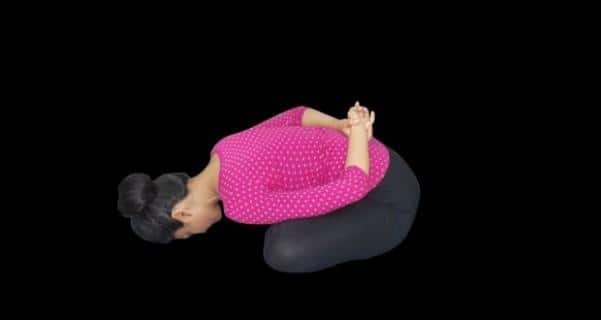‘Yoga can help treat eating disorders like Anorexia and Bulimia’
Smt Hansaji Jayadeva Yogendra Dec 01, 2014 at 12:49 pm

Eating disorders are dangerous and can at times be life-threatening. Psychological, biological, emotional or very rarely genetic factors can trigger a condition such that, one is not interested in eating. Those suffering from eating disorders may slip into ‘denial mode’ and choose not to see the obvious signs and symptoms. In majority of cases, psychological and emotional triggers are responsible for food disorders.
Anorexia - Major symptoms:
- Obsessive fear of gaining weight
- Dangerously low body weight
- Irregularity or lack of menstruation
- Low bone density
- Poor skin integrity
- Cardiac strain or other related issues
- Low immunity
- Binge eating, followed by compensatory behaviours (e.g.: Purging (self-induced vomiting, excessive use of laxatives/diuretics or excessive exercise)
- Fasting and over-exercising
- Binge eating at least 2-3 times a week without compensatory behaviour
YOGA TECHNIQUES THAT HELP COUNTER EATING DISORDERS
To strengthen digestive muscles
Yog Mudra – The yoga pose:
- Sit comfortably in sukhasana – the happy pose
- Take your left wrist back and hold it with your right hand at the back
- Inhaling, slowly expand your chest and pull your shoulders backward
- Exhaling, bend forward and try to touch your forehead to your right knee. If it is very difficult for you to do that, then try to bring your forehead as close to your head as possible
- Inhaling, return to the first step
- Repeat the steps for your left knee and then in the middle
- Stand erect with your legs two feet apart and interlock your hands in the front
- Inhaling, raise your arms over your head, bend backwards and hold the position for 6 seconds
- Exhaling, bend forward and swing your arms behind
- Interlock your fingers and stretch your arms towards your head
- Inhaling, return to the starting position
- Repeat the asana twice
Talasana – The palm tree pose:
- Stand erect with your feet apart and keep your back straight
- Look straight ahead and keep your gaze fixed at a point
- Inhaling, raise your arms up and simultaneously raise your heels balancing the weight of your body on your toes
- Ensure that your raised arms touch your ears, palms facing upwards and your fingers pointing towards the ceiling
- Stretch your body completely in this position and stay for as long as you can
- Repeat the asana three times
- Sit in sukhasana
- Raise your hands towards the sky and keep palms facing each other
- Catch hold the fist of one hand with the other hand and stretch your hands upward as if you are raising your body. You will get stretched in your abdominal muscles
- Maintain the pose for 10-15 seconds and then relax
- Repeat the asana three times
- Lie down on your back
- Inhaling, raise your hands overhead and stretch as much as possible
- Simultaneously stretch your legs fully, toes pointing down and front to deepen the stretch. Continue breathing
- Hold the pose for 10 seconds and relax
Makarasana – The crocodile pose:
- Lie down on your stomach with the front of you in contact with the floor or the mat
- Keep a little distance between your legs and relax your feet by keeping your toes together and heels apart
- Fold your arms and rest your head on the back of your palms
- Relax in the asana for 3-5 minutes
- Lie down on your back and turn to your left side
- Fold your left arm and cushion your head on it
- Align your body in one straight line and keep your legs one on top of the other
- Rest your right arm on your body
- Close your eyes and relax in this pose for 5 minutes
- Lie down on your back with your feet comfortably apart
- Keep your arms by your side with palms facing up
- Close your eyes and relax
- Feeling the touch of air on your body’s skin, let the mind remain thoughtless
- Stay in the asana for 10 minutes
Yogendra Nishpandhbhava – The no-movement pose:
- Lean against a wall, touching your head to the wall and sit in a relaxed manner with your legs stretched in front of you
- Keep a distance of 2-3 feet between your legs
- Place your hands gently on your upper thighs with palms facing upwards
- Listen to the sound of any vehicle passing by at a distance
- Sit in this posture for 5 mins and focus on any distant sound
No comments:
Post a Comment